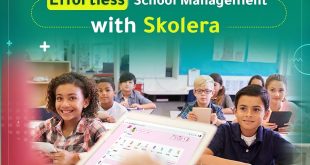You might think that the words flexibility and education can never occur in the same sentence. People usually associate education with a school building, daunting timetables, and the never-ending school week. The educational process is hardly ever described as “flexible” due to the huge amount of time and effort needed for its fulfillment. For this reason, flexible education emerged as a means to resolve the inconvenient aspects of traditional education.
As the name indicates, flexible education is all about convenience and effectiveness. It is a system in which learning is basically student-centered with regard to the when, where, and how of learning.
Students enjoy the luxury of choosing the timing of their lessons, whether they want to continue education at school or at home, and in what style they want their education to be like.
This system is also designed to provide students with unlimited access to the materials, training, and support needed for an overall successful learning experience. This article will help students, teachers, school heads, and parents understand how flexible education is reshaping the entire learning experience for the purpose of maximizing students’ pursuit of knowledge.
Get started Skolera for FREE
Why Flexible E-Learning?
Recently, flexible education and e-learning have been used interchangeably in conversations regarding distance education. Distance education is a type of learning system in which students do not physically attend school within the designated school hours. Both distance education and e-learning have objectives that are essentially the same.
E-learning has been proven effective when it comes to enhancing teacher and student accessibility, increasing student engagement, reducing unnecessary costs, and much more. These e-learning advantages definitely serve the growing demand for distance education in general.
A successful e-learning system should consist of several e-learning components to serve the system’s primary users – teachers, students, and school heads. One of its most essential features is that the system supports asynchronous learning – in which lessons do not require real-time interaction, but instead allows for a more flexible learning experience in which students set their own schedule.
Another feature of any e-learning software is the integration of analytics and reports for the benefit of teachers and school heads. This feature facilitates the efficacy of courses and measures user satisfaction as well. More details about the numerous features of e-learning systems are specified below.
Why Is Flexible Education Smarter than Traditional Education?
- In traditional education, many students find that the courses they enroll in can be rather slow-paced for them. Flexible education takes care of this issue by allowing students to accelerate or decelerate their courses according to their capacity. For instance, a high school student can choose to take his biology course in one year instead of two – leaving more time for other courses.
- Similarly, students who have dropped out due to enormous school load can return to school by setting more relaxed and extended periods of learning under a dynamic e-learning system.
- Flexible education breaks the time barrier between students and the road to knowledge. Students can choose to take their classes in their preferred timings; hereby giving some of them the freedom to work on the side.
What’s So Special About E-learning?
The Impact of E-learning On Students
There are numerous characteristics of e-learning that make it both appealing and distinguished in the world of education. One of the most far-reaching aspects of e-learning is that it speaks to each student’s needs and capabilities. Because no student is like the other, it is difficult to ensure all students’ retention and comprehension in a physical classroom.
With flexible e-learning, the case is entirely different because each student is assessed according to their cognitive capacity. The student is free to choose his/her courses and determine the pace they want for learning.
E-learning is additionally quite effective in terms of time management. Unlike physical classrooms that take place in specified time slots, virtual classrooms allow students to take their classes whenever they can. Students enjoy the benefit of taking a class at seven in the morning or even at midnight. This is especially facilitated because most e-learning systems are cloud-based.
In other words, the content that is delivered to students is stored for the entire academic school year and is regularly updated by teachers.
Evaluation and assessment are necessary elements of learning. Usually, teachers shuffle between various tasks – preparing for lessons, conducting these lessons, staying for duty time, creating tests, etc.
Teachers are often too busy to correct a test for 30+ students in one week. Consequently, students might find themselves lost and frustrated when the class moves on to another topic before finalising the previous one and knowing their weak points. Under an e-learning system, tests are created and corrected automatically and on a day-to-day basis; thus, it grants students the opportunity to be regularly informed of test feedback.
Join Skolera Now for FREE
Justifications For The Use of E-learning in Teaching
For teachers, e-learning as a system is perfectly valuable for a number of reasons. One benefit is that the hassle of administrative tasks gets done by the system itself. This means that traditional and mundane tasks like collecting homework assignments, creating quizzes, and taking attendance are performed by the tools integrated in the e-learning system.
Another way that the system helps make life easier for teachers is that it can enhance the teaching quality and accordingly; student performance. Online education is essentially internet-based; which means that the search engine is the teacher and the student’s best-friend.
Teachers have the ability to alternate their teaching techniques and modes of presentation to allow for a more interactive educational experience. For instance, some students learn better through visuals and animated lessons. In that case, teachers can integrate videos, presentations, and educational activities into their curriculum to encourage student engagement.
A popular Chinese proverb says “Teachers open the door, but you must enter by yourself.” Teachers can develop student independence and research skills through e-learning systems. Online education has paved the way for students to probe the digital world web more confidently. Because every piece of information is on the internet, students can take advantage of that to learn extracurricular information.
Students no longer have to be dependent on their teachers for their supply of information. This will facilitate and develop the self-learning skills that students so hugely need. In that manner, students and teachers alike benefit from online education as it not only eases the workload on teachers; but also broadens students’ knowledge even beyond the classroom.
Read this great article about educational technologies.
Implementing E-learning For School Development
For school managers and heads of departments, transitioning to an e-learning system might seem like an overwhelming idea at first. However, the shift to online education will definitely impact schools’ development and success in the long-run. Implementing a School Management Software for the school has numerous advantages.
- Implementing an e-learning system within the school will boost the school’s productivity through the time management of managerial and logistical tasks. If the school decides to implement a School Management System (SMS), tasks like monitoring day-to-day school activities, creating and updating databases, and even managing human resources will be left to the system.
- The system will also ensure cost reduction when it comes to unnecessary finances like paperwork and the costs of communication. It would be quite practical for schools to start digitizing its filing system for easier access and revision. Instead of calling each parent to inform them of a parent-teacher conference, the administrator can simply post an announcement on the system.
- School managers and heads of departments will be spared the hassle of follow-ups with the students’ parents. E-learning systems are usually optimized with a parent dashboard that would enable parents to track their children’s progress, as well as be updated on new changes in the school. For example, a parent with three students enrolled in the school will be able to smoothly access each of his/her child’s file with a click of a button.
This extensive guide is quite helpful for school heads and administrators who are prepared to implement a School Management System into their institution.
Skolera helps schools implement distance learning through its software that provides virtual, all inclusive classrooms. Using only one unified and comprehensive platform, schools can command basically every aspect of the school – from employee records to school finances and much more.
The system has been collectively designed by experts in the field of education and software management to ensure maximized user satisfaction. In 2018, Skolera was ranked among the top 20 best LMS software worldwide in terms of user experience. To learn more about Skolera’s software, click here
Read: How to Pick the Wrong School Management System
Sooner or later, academic institutions and especially schools will fully acknowledge the necessity of adopting the flexible philosophy of learning into the educational system. E-learning systems have proven effective and productive in many schools and universities worldwide.
Flexible education is a great asset for schools, a convenient platform for teachers, and an efficient system for students. The time has come to start applying different educational techniques in schools to embrace young learners’ immense potential for knowledge.
Book FREE Live Demo Now
Sources:
Joan, D. R. (2013). Flexible Learning as New Learning Design in Classroom Process to Promote Quality Education. Journal on School Educational Technology, 9(1), 37-42. https://files.eric.ed.gov/fulltext/EJ1098325.pdf
Deakin University, Australia (2009). Introducing flexible learning. Consultado el 08 de Mayo del 2013. http://www.deakin.edu.au
Khoury, Ansar & Nasir Eddeen, Lubna & Saadah, Doaa & Harfoushi, Osama. (2011). E-Learning: Justifications and Obstacles. iJET. 6. 53-56. 10.3991/ijet.v6i3.1610. https://www.researchgate.net/publication/220049771_E-Learning_Justifications_and_Obstacles
 Skolera LMS Blog Educational Technology Articles and News
Skolera LMS Blog Educational Technology Articles and News




